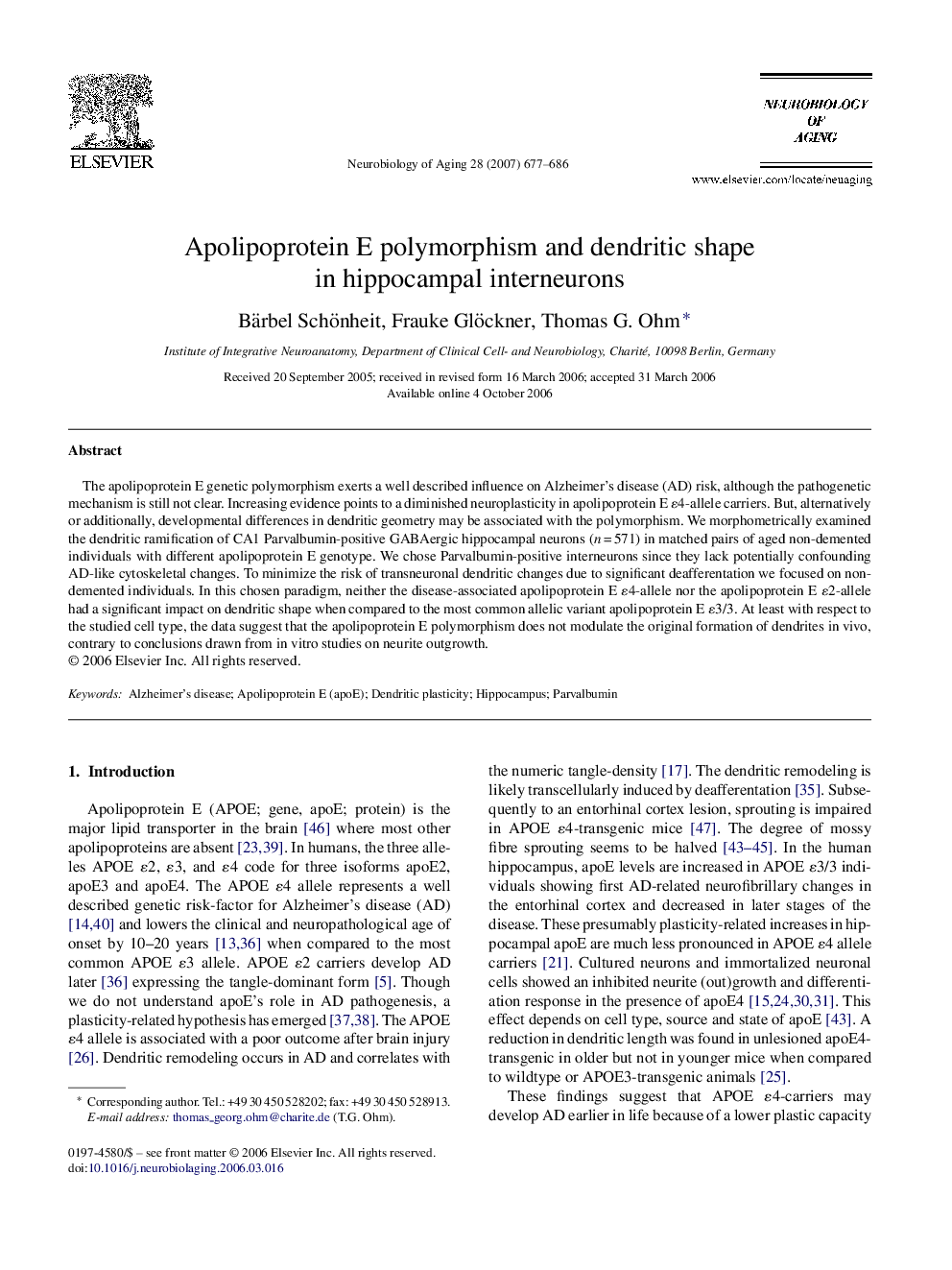| Article ID | Journal | Published Year | Pages | File Type |
|---|---|---|---|---|
| 328761 | Neurobiology of Aging | 2007 | 10 Pages |
The apolipoprotein E genetic polymorphism exerts a well described influence on Alzheimer's disease (AD) risk, although the pathogenetic mechanism is still not clear. Increasing evidence points to a diminished neuroplasticity in apolipoprotein E ɛ4-allele carriers. But, alternatively or additionally, developmental differences in dendritic geometry may be associated with the polymorphism. We morphometrically examined the dendritic ramification of CA1 Parvalbumin-positive GABAergic hippocampal neurons (n = 571) in matched pairs of aged non-demented individuals with different apolipoprotein E genotype. We chose Parvalbumin-positive interneurons since they lack potentially confounding AD-like cytoskeletal changes. To minimize the risk of transneuronal dendritic changes due to significant deafferentation we focused on non-demented individuals. In this chosen paradigm, neither the disease-associated apolipoprotein E ɛ4-allele nor the apolipoprotein E ɛ2-allele had a significant impact on dendritic shape when compared to the most common allelic variant apolipoprotein E ɛ3/3. At least with respect to the studied cell type, the data suggest that the apolipoprotein E polymorphism does not modulate the original formation of dendrites in vivo, contrary to conclusions drawn from in vitro studies on neurite outgrowth.
